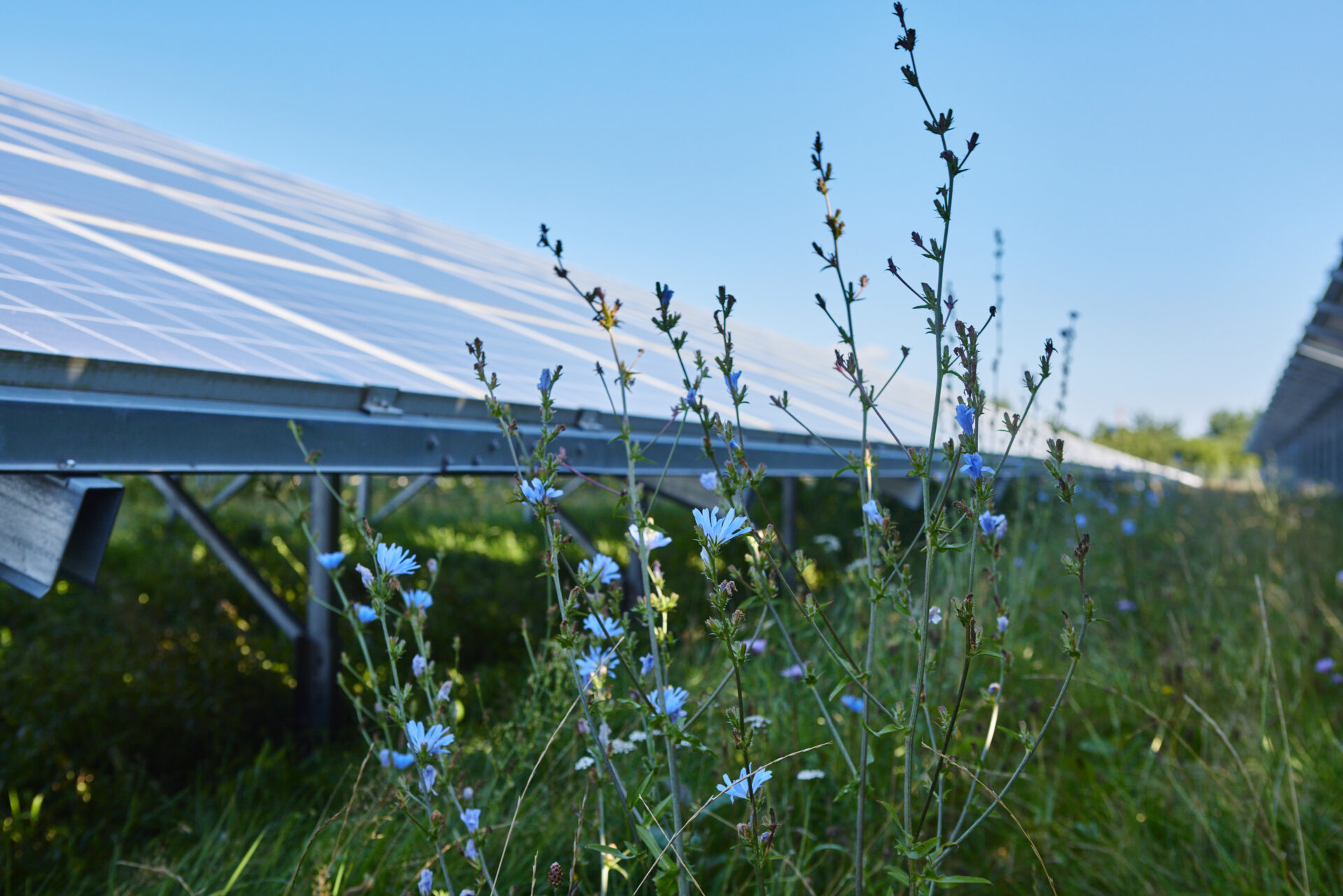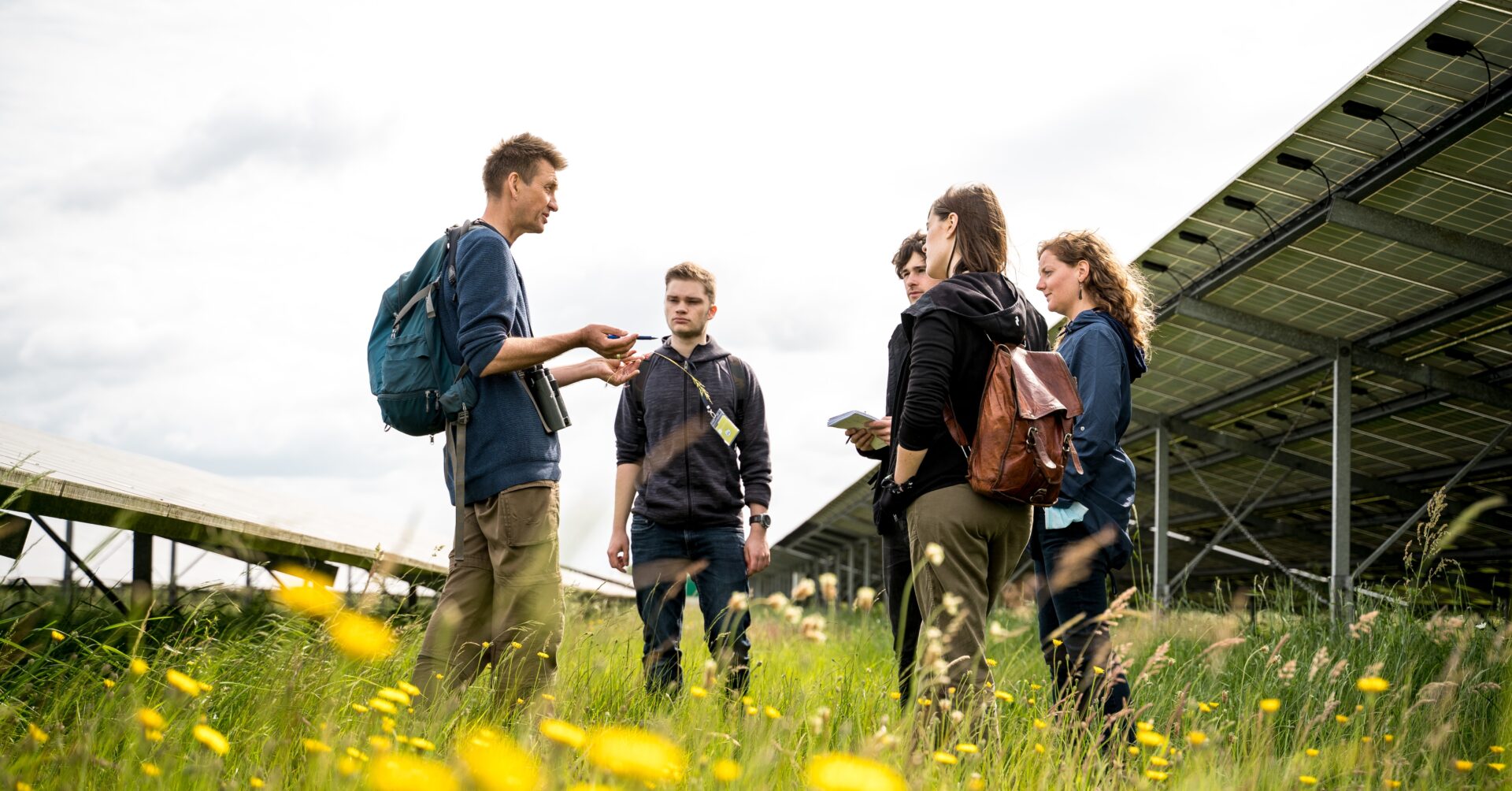The most important steps up to the construction of a solar park
Before a solar park can be planned and subsequently built, a suitable location must be found.

Step 1: Land reclamation
Which areas are suitable for solar parks? Can a solar park be built on any area? What criteria play a role in land acquisition?
Site selection usually begins with the search for a usable area. If this area is not proposed by a landowner and subsequently checked, potential areas can also be found on satellite images and maps or search trips.
An important framework condition in the determination of potential areas is the State planning requirements. Either at federal state level or for individual regions - so-called planning regions - the state planning requirements for "spatially significant planning" are concretised. Depending on the defined objectives, regional plans, for example, provide information on which areas are suitable for the planning of solar parks, which are excluded or which areas can be considered under certain circumstances.
If the area is suitable for the construction of a ground-mounted PV system, negotiations begin with the subsequent conclusion of a contract (usually in the form of a lease) with the landowners. You can find more information here.
What is a so-called "white area analysis"?
With the Examination on geographic information systems (GIS) is referred to as the "white area analysis". Areas that are determined according to the criteria of an exclusion procedure (e.g. no settlement areas, no forest areas, no nature conservation areas) are called "white". This determines which areas are generally suitable for solar park planning. Once these areas have been identified, further check factors are added: Is the area elongated or compact? How many parcels are included in the area? Questions regarding slope, orientation, shading or suitability for agricultural use also need to be clarified - all Parameters that would influence the subsequent project planning. Each solar park is planned individually. However, before planning begins, the general Potential of an area have been determined.
What are priority and exclusion areas?
In the State development plans areas can also be designated in which ground-mounted photovoltaic systems (solar parks) are to be prioritised or not built, whereby the Regulations differ considerably between the federal states. As a rule, settlement areas, forest and woodland areas and nature conservation areas (or other particularly valuable nature conservation areas) are designated as exclusion areas, but also, for example, areas for the extraction of near-surface raw materials. For certain areas, a Weighing up whether solar parks can be built. Particularly noteworthy here are Landscape conservation areas or bird sanctuarieswhere solar parks can be built if other framework conditions are favourable (for example, if the area is upgraded in terms of biodiversity).
Suitable surfaces:
- Arable land or grassland that produces lower agricultural yields, for example because the climatic conditions are unfavourable or the soil quality is poor,
- Areas covered by the Renewable Energy Sources Act (EEG), i.e. simplified verges along railway lines and motorways and (depending on the federal state) possibly agricultural land in so-called "less-favoured areas" and
- existing conversion areas, for example on disused landfill sites, open-cast mines, pits, quarries or military training areas.
Excluded areas are in particular
- Settlement areas (local areas, buildings, etc.),
- Roads and paths, railway lines, rail transport facilities,
- Forest and woodland areas,
- Floodplains,
- Nature reserves, national parks, biosphere areas (core zones), biotopes,
- Natural monuments,
- Water protection zones (Zone I).
Areas that may be considered are:
- Biotope networks (dry, wet and medium habitats, general game trail plan, etc.),
- Natura 2000 areas, for example flora-fauna-habitat areas (FFH) and bird sanctuaries (SPA),
- Protected landscape areas,
- Biosphere areas (development zones and maintenance zones),
- Water protection zones (Zone III).
Note: This list can only serve as a guide and describes the basic suitability of an area for solar parks. Please find out more about the respective suitability, consideration and exclusion criteria in your federal state or planning region.
Individual inspection of the surfaces
One Individual assessment for each site with potential for a solar park is essentialas, for example, reserved and priority areas differ depending on the state and regional planning. It is also necessary to check the respective valid state framework plan, as individual decisions can also be made about areas such as biotope networks, landscape conservation areas or water protection zones. Solar parks are becoming part of our cultural landscape and in the planning process, appropriate consideration can be given to synergy potential in an individualised approach. Of course, it is not only general planning law requirements that play a role, but also the special requirements for a specific location The visual impact on the landscape, for example, also plays a role.
Inspection of topography and grid connection
If potential areas have been determined by the "white area analysis", for example, the next step is the Assessment of the topography of the area. In addition to the size and the prevailing soil quality, the surroundings and the location also play an important role. The area should neither be shaded nor located on a north-facing slope. Other criteria include the distance to residential areas and neighbouring infrastructure such as motorways, railway or power lines or distances to forests and bodies of water. A nearby grid connection point is also advantageousto connect the system to the power grid later and with as little effort as possible.
Negotiations with landowners
If an area is suitable for a solar park and all the necessary Prerequisites given with regard to the suitability of the areaThe landowners are approached as part of this process. Project developers discuss with the owners their willingness and the conditions for providing or leasing land for the construction of a solar park. In addition, it is determined how the plant can be dismantled without leaving any residue should this be desired. In this way, solutions can be found as to how land can be used for agriculture again after the end of the lease. If the landowners agree to give up their parcels of land for the planning and operation of a solar park to the development company, corresponding contracts are concluded. These contracts provide the necessary security for further planning.
Step 2: The planning phase
Once the area has been secured and a contract has been concluded with the landowner, this serves as a planning basis for the municipality. You can find all information on the municipal planning process here here.
Further steps in the creation of a solar park
All steps at a glance:
- Step 2 from 4: Planning phase - The path to planning permission
- Step 3 from 4: Construction phase - How is a solar park built?
- Step 4 from 4: Operation & management - Maintaining and managing a solar park






